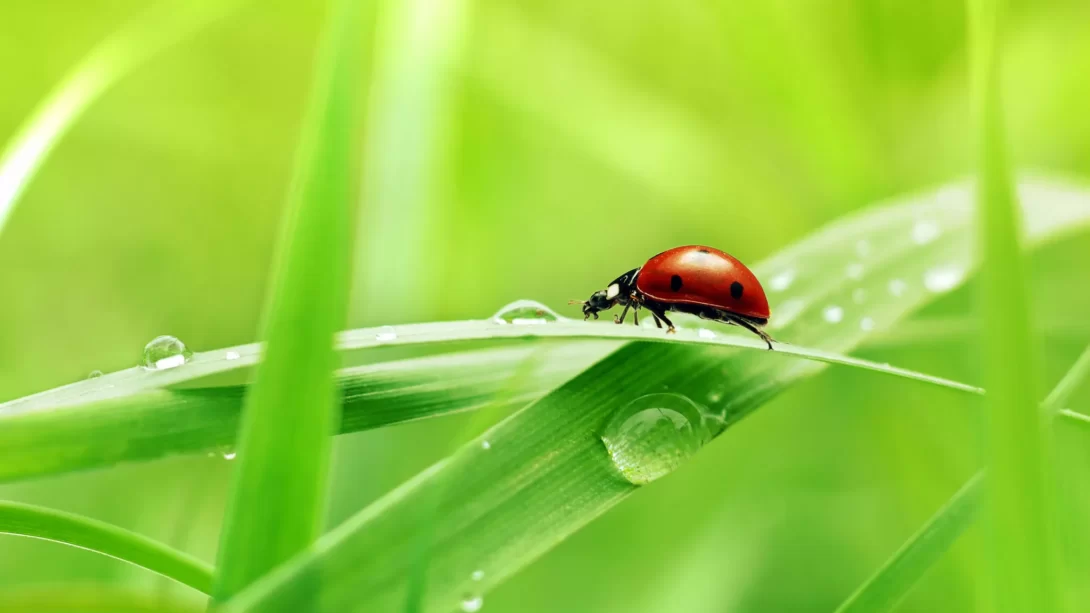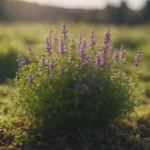Ladybugs, often spotted in gardens, are widely recognized for their distinctive spots and vibrant colors. Gardeners frequently encounter these small beetles, leading to curiosity about their habits and diet. A common question arises: do ladybugs eat grass? This article aims to explore the dietary preferences of ladybugs, shedding light on their relationship with grass and other garden plants.
Ladybugs
Ladybugs, or lady beetles, belong to the family Coccinellidae. They are known for their rounded bodies, usually red or orange with black spots. Beyond their charming appearance, ladybugs play a crucial role in garden ecosystems. As natural predators, they help control pest populations, making them invaluable allies for gardeners.
The Diet of Ladybugs
The primary diet of ladybugs consists of soft-bodied insects, with aphids being their favorite. These garden pests are consumed in large quantities by ladybugs, aiding in the natural pest control process. Ladybugs also feed on mites, scale insects, and other small invertebrates. This insectivorous diet is essential for understanding their interaction with plants, including grass.
Common Misconceptions About Ladybugs
There’s a widespread belief that ladybugs feed on plants, including grass. This misconception likely arises from frequently observing them on various plants. However, ladybugs do not eat grass or other plant material. Their presence on plants is usually in search of prey, like aphids, rather than for the plant itself. Understanding this behavior is key to appreciating the ecological role of ladybugs in gardens.
Ladybugs and Grass: An Indirect Relationship
While ladybugs are not grass-eaters, their presence on grass can be common. This is often due to their pursuit of aphids and other small insects that inhabit grassy areas. Ladybugs may also be found on grass and plants for shelter or while searching for a suitable environment for laying eggs. Thus, their relationship with grass is more about the ecosystem it supports rather than the grass itself.
The Importance of Ladybugs in Gardens
Ladybugs are a boon to garden health, primarily through their appetite for pests. By controlling aphid populations and other harmful insects, ladybugs indirectly contribute to the health of grass and garden plants. A healthy, pest-free plant is more robust and better able to withstand environmental stresses. This indirect impact underscores the importance of ladybugs in maintaining ecological balance in gardens.
Attracting and Supporting Ladybugs in Your Garden
Encouraging ladybugs to reside in your garden is beneficial for natural pest control. To attract them, plant pollen-rich flowers like marigolds, dandelions, and calendula. These plants provide nectar and pollen, which supplement the ladybugs’ diet, especially when prey is scarce. Providing a habitat, such as a ladybug house or leaving some natural debris and leaf litter, can also create a welcoming environment for ladybugs.
Tips for Creating a Ladybug-Friendly Environment
In addition to planting attractive flora, avoiding pesticides is crucial. Chemicals used to kill pests can also harm ladybugs and other beneficial insects. Instead, opt for organic gardening practices to maintain a healthy, balanced ecosystem. Ensuring a diversity of plants in your garden will also support a wider range of insects, which in turn supports a healthy ladybug population.
Conclusion
Ladybugs, with their insectivorous diet, do not consume grass but are often found on it while hunting for prey or seeking shelter. Their presence in gardens is immensely beneficial, contributing to the control of aphids and other pests that can damage grass and plants. By understanding their dietary habits and ecological role, gardeners can appreciate the importance of these beetles and take steps to create a supportive environment for them. In doing so, not only are the ladybugs nurtured, but the overall health and vibrancy of the garden are enhanced, showcasing a harmonious balance between wildlife and plant life.




